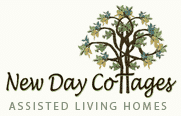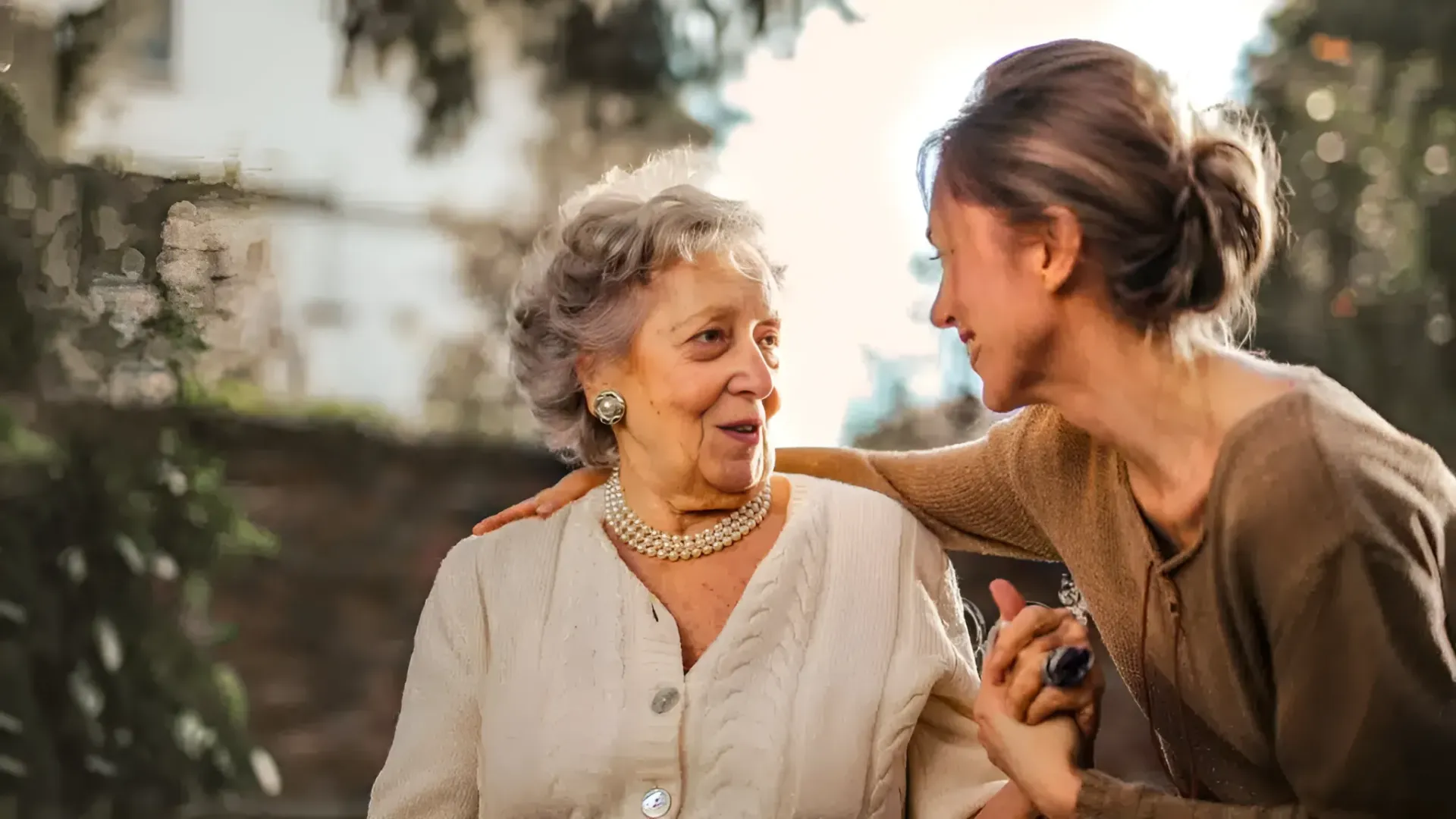What Is the Main Purpose of Having Common Areas in Assisted Living Settings?

Common areas in assisted living settings are designed to improve your loved one’s quality of life. They foster social interaction, helping residents form meaningful relationships and reducing feelings of loneliness. These spaces promote physical activity with amenities like walking paths and gyms, boosting health and mood. Additionally, they facilitate a sense of community through shared dining and group activities, creating a vibrant, interactive environment. Emotional well-being is enhanced through structured social interactions, supportive communities, and engaging dining experiences. To understand all these common areas’ benefits, keep exploring the details.
Key Takeaways
- Facilitate social interaction and community building among residents.
- Promote movement and physical activity through well-equipped and accessible areas.
- Enhance emotional well-being by reducing loneliness and providing support.
- Improve dining experiences by encouraging social interaction during meals.
- Foster a vibrant and engaging environment through organized group activities and events.
Promote Social Interaction
Promoting social interactions in assisted living settings is essential for residents’ emotional well-being and overall quality of life. You might wonder how to foster these interactions effectively.
Common areas are essential in this process, offering spaces where residents can gather, socialize, and build meaningful relationships. When you thoughtfully design and utilize these common areas, you create opportunities for residents to engage in conversations, group activities, and shared interests.
This involvement can significantly reduce feelings of loneliness and isolation, which are prevalent among elderly individuals. For instance, arranging comfortable seating in a lounge can encourage spontaneous conversations, while a shared dining room can turn meal times into social events.
Additionally, organizing regular social events in these common areas, such as game nights, movie screenings, or arts and crafts sessions, can enhance social bonds. These activities provide structured opportunities for interaction, making it easier for residents to connect.
Encourage Physical Activity
While promoting social interaction is essential for emotional well-being, encouraging physical activity to maintain residents’ physical health and vitality is equally crucial.
Common areas in assisted living settings are specifically designed to promote movement. Whether it’s a well-equipped gym, a spacious walking path, or a garden area, these spaces are fundamental for keeping residents active.
Regular physical activity helps improve cardiovascular health, enhance mobility, and reduce the risk of falls. It’s not just about exercise classes; even casual activities like walking or gardening can make a significant difference. Providing these opportunities in common areas ensures residents have convenient access to engage in regular physical activity.
Moreover, physical activity is critical in managing chronic conditions such as arthritis, diabetes, and hypertension. When you encourage residents to participate in physical activities, you’re helping them maintain independence and improve their overall quality of life.
These activities also foster a positive mental outlook, as exercise is known to release endorphins, which can help combat depression and anxiety.
Foster a Sense of Community
Creating a sense of community in assisted living settings is essential for fostering emotional well-being and a sense of belonging among residents. Designing common areas that encourage social interaction empowers residents to build relationships and support networks. These connections are crucial for individuals who may feel isolated due to age-related issues or being away from their previous homes.
You can organize activities like group games, movie nights, and communal meals in these shared spaces. These events not only provide entertainment but also create opportunities for residents to engage with one another. Residents can share experiences, offer mutual support, and build lasting friendships by participating in these activities.
Moreover, common areas serve as neutral grounds where everyone can freely interact without feeling confined to their rooms. This inclusivity breaks down barriers and fosters a culture of openness and acceptance.
When residents feel part of a community, they’re more likely to participate in activities, leading to a more vibrant and interactive environment.
Improve Emotional Well-being
To enhance emotional well-being in assisted living settings, you should encourage social interaction and foster a sense of community. These actions help residents feel connected and supported, essential for their mental health.
Creating common areas that promote these interactions can significantly enhance their overall quality of life.
| ASPECT | INDEPENDENT LIVING | ASSISTED LIVING |
|---|---|---|
| Level of care provided | Focuses on social needs and independence; limited medical and supportive care services. | Provides assistance with activities of daily living (ADLs) and access to medical and supportive care services. |
| Cost structure | Requires an entrance fee and monthly fee for maintenance and amenities. | Rental-based with monthly fees covering services and personal care assistance. |
| Community design | Large campuses with multiple buildings spread out, offering more space and distance between residences. | Smaller footprint with most resident needs provided within the building, including memory care programs for individuals with cognitive impairments. |
| Family involvement | Primarily resident-driven decisions with encouragement for family involvement in the community. | Active family involvement, especially for residents with dementia, including participation in care planning processes. |
| Amenities and programming | Flexibility in dining options and programming. | All-inclusive meals and tailored programming, particularly in memory care programs. |
Encourage Social Interaction
Shared spaces like communal dining rooms and activity centers are essential in fostering social interaction among residents, greatly enhancing their emotional well-being. You’re less likely to feel isolated when participating in group activities or simply sharing a meal with others. Social interaction can significantly reduce feelings of loneliness and depression, which are common concerns in assisted living settings. You’ll find opportunities to build meaningful relationships and develop new friendships by engaging with fellow residents.
These interactions are more than just casual conversations—they provide emotional support and a sense of belonging. When you converse and bond over shared interests and experiences, it helps you feel understood and valued. This emotional connection is critical for maintaining a positive outlook on life.
Moreover, these communal areas often host activities like games, movie nights, and educational workshops designed to encourage engagement. Participating in these events keeps you mentally active and offers a structured way to meet others.
The camaraderie and mutual support you gain from these shared experiences can significantly improve your happiness and emotional health.
Foster Sense of Community
By actively participating in communal activities and social interactions, residents can foster a strong sense of community that greatly enhances their emotional well-being. Common areas serve as pivotal spaces where residents can form meaningful connections. These interactions help combat feelings of isolation and loneliness, which are common challenges in assisted living environments.
You’re not just passing the time but creating bonds when you engage in group activities like arts and crafts, game nights, or group exercise classes. These shared experiences provide a sense of belonging and emotional support. You’ll find that having friends and acquaintances you can rely on makes daily life more enjoyable and less stressful.
Moreover, the sense of community extends beyond just social activities. It’s about knowing you’re part of a more prominent family that cares about your well-being. This can significantly improve your mental health, reduce anxiety, and even contribute to better physical health. The emotional benefits of feeling connected to others are immense, fostering a positive atmosphere permeating the living environment.
Enhance Dining Experiences
Creating memorable dining experiences in assisted living settings involves more than just serving meals; it fosters a sense of community and joy. When you design a dining area that encourages social interaction, you contribute to the emotional well-being of residents. The layout, ambiance, and seating arrangements can transform a simple meal into a delightful social event.
You can enhance dining experiences by incorporating round tables, naturally encouraging conversation. Soft lighting and comfortable seating also add to a warm and inviting atmosphere. Think about the small details:
- Fresh flowers on tables.
- A variety of menu options.
- The presence of staff to assist when needed.
All these elements work together to create a positive dining experience.
Providing themed meals or special event dinners can also break the routine and excite residents. Celebrations like birthdays or holidays offer perfect opportunities for communal dining, where everyone can come together to share in the joy.
Provide Recreational Opportunities
Providing recreational opportunities in common areas is about more than having fun; it enhances social interaction and promotes physical activity.
You can create spaces that encourage residents to engage with one another and stay active. These activities foster a sense of community and improve overall well-being.
Enhance Social Interaction
To nurture a vibrant community, offering a variety of recreational activities can significantly enhance social interaction among residents in assisted living settings. When you provide a range of engaging options, residents are more likely to participate and form meaningful connections. Activities like game nights, art classes, and musical events entertain and serve as natural icebreakers, making it easier for residents to start conversations and build friendships.
Creating a sense of belonging is vital for mental and emotional well-being. When residents feel connected, they experience less loneliness and isolation. Organizing group activities allows them to leave their rooms and engage with others. This interaction helps build a supportive network where residents can share experiences and offer mutual encouragement.
Moreover, structured recreational opportunities allow residents to discover common interests. Whether it’s a shared love for painting or a passion for classic films, these activities help people find common ground. Facilitating these moments of connection fosters a sense of community and well-being.
Promote Physical Activity
Encouraging physical activity in assisted living facilities is essential for maintaining residents’ health and vitality. Common areas are pivotal in this effort, as designated spaces for various recreational activities are provided.
When you design these areas with residents’ needs in mind, you create opportunities for them to engage in physical exercise that improves cardiovascular health, enhances mobility, and boosts mental well-being.
Incorporating features like walking paths, exercise rooms, and activity centers ensures residents can easily access physical activities. You can organize group exercise classes, such as yoga or tai chi, which promote physical fitness and foster social connections. Ensuring these activities are tailored to different ability levels makes them more inclusive and beneficial for all residents.
Furthermore, outdoor common areas with gardens or patios can encourage residents to spend time in nature, which has been shown to reduce stress and improve mood.
Frequently Asked Questions
How Are Common Areas Maintained for Cleanliness and Hygiene?
Regular cleaning schedules and strict protocols maintain common areas for cleanliness and hygiene. Professional cleaning staff disinfect surfaces frequently, guaranteeing sanitization of high-touch areas.
Staff also use eco-friendly and effective cleaning products. Residents are encouraged to practice good hygiene, and hand sanitizers are readily available. This guarantees a safe, comfortable environment for everyone, minimizing the risk of infections and promoting overall well-being.
What Safety Measures Are in Place in Common Areas?
In common areas, you’ll find a range of safety measures to guarantee residents’ well-being. Emergency call buttons, handrails, and non-slip flooring are standard. Regular staff patrols and surveillance cameras provide extra security. Fire alarms and evacuation plans are posted. Also, furniture is arranged to prevent tripping hazards.
These measures are meticulously implemented to create a safe, secure environment for everyone.
Are Visitors Allowed to Use the Common Areas?
Yes, visitors can use the common areas in assisted living settings. These spaces are designed to promote social interaction and community engagement, benefiting both residents and their guests.
Adhere to specific guidelines the facility might have, such as designated visiting hours or sign-in procedures. This guarantees a safe, welcoming environment for everyone, enhancing the overall living experience for residents.
How Is Noise Managed in Common Areas?
Managing noise in common areas is crucial for residents’ comfort. Staff often implement quiet hours, use sound-absorbing materials, and set up designated activity zones. They also encourage respectful behavior among residents and visitors. Regular monitoring guarantees the environment remains peaceful.
If you have specific concerns, don’t hesitate to discuss them with the facility’s management—they’re usually very accommodating and responsive to feedback.
Are Pets Permitted in the Shared Common Spaces?
Yes, pets are often allowed in shared common spaces, but it depends on the facility’s pet policy. You should check with the specific assisted living community for their guidelines.
Many places recognize the therapeutic benefits of pets and permit them under supervision to guarantee safety and comfort for all residents.
Always ensure pets are well-behaved and don’t disrupt others to foster a welcoming environment.
Conclusion
Common areas in assisted living settings are crucial for enhancing residents’ quality of life. They promote social interaction, encourage physical activity, and foster community, improving emotional well-being.
By enhancing dining experiences and providing recreational opportunities, these spaces create a more engaging and fulfilling environment.
So, don’t underestimate the power of well-designed common areas; they significantly contribute to the overall happiness and health of the residents.










